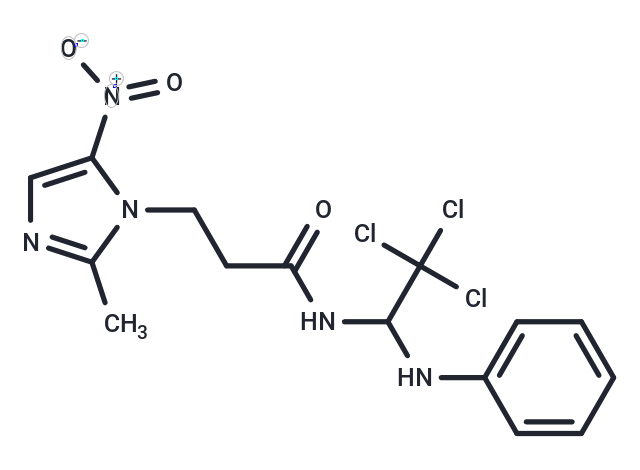Shopping Cart
- Remove All
 Your shopping cart is currently empty
Your shopping cart is currently empty

Apcin is a potent and competitive inhibitor of anaphase-promoting complex/cyclosome (APC/C(Cdc20)) E3 ligase activity. Apcin competitively inhibits APC/C-dependent ubiquitylation by binding to Cdc20 and preventing substrate recognition. It acts by blocking mitotic exit and being synergistically amplified by co-addition of Ts-Arg-OMe.

| Pack Size | Price | Availability | Quantity |
|---|---|---|---|
| 1 mg | $40 | In Stock | |
| 2 mg | $57 | In Stock | |
| 5 mg | $89 | In Stock | |
| 10 mg | $143 | In Stock | |
| 25 mg | $288 | In Stock | |
| 50 mg | $497 | In Stock | |
| 100 mg | $748 | In Stock | |
| 1 mL x 10 mM (in DMSO) | $98 | In Stock |
| Description | Apcin is a potent and competitive inhibitor of anaphase-promoting complex/cyclosome (APC/C(Cdc20)) E3 ligase activity. Apcin competitively inhibits APC/C-dependent ubiquitylation by binding to Cdc20 and preventing substrate recognition. It acts by blockin |
| In vitro | apcin as a small molecule ligand of Cdc20 that inhibits APC/CCdc20 and prolongs mitosis.?apcin paradoxically shortens mitosis when SAC activity is high.?These opposing effects of apcin arise from targeting of a common binding site in Cdc20 required for both substrate ubiquitination and MCC-dependent APC/C inhibition.?Furthermore, apcin cooperates with p31comet to relieve MCC-dependent inhibition of APC/C.?Apcin therefore causes either net APC/C inhibition, prolonging mitosis when SAC activity is low, or net APC/C activation, shortening mitosis when SAC activity is high, demonstrating that a small molecule can produce opposing biological effects depending on regulatory context. |
| Molecular Weight | 438.65 |
| Formula | C13H14Cl3N7O4 |
| Cas No. | 300815-04-7 |
| Smiles | Cc1ncc(n1CCC(=O)NC(Nc1ccccc1)C(Cl)(Cl)Cl)[N+]([O-])=O |
| Relative Density. | 1.68 g/cm3 (Predicted) |
| Storage | Powder: -20°C for 3 years | In solvent: -80°C for 1 year | Shipping with blue ice. | |||||||||||||||||||||||||||||||||||
| Solubility Information | DMSO: 240 mg/mL (547.13 mM), Sonication is recommended. | |||||||||||||||||||||||||||||||||||
Solution Preparation Table | ||||||||||||||||||||||||||||||||||||
DMSO
| ||||||||||||||||||||||||||||||||||||

Copyright © 2015-2025 TargetMol Chemicals Inc. All Rights Reserved.